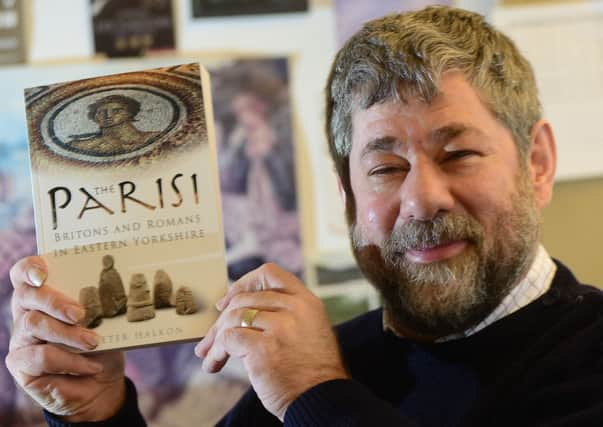Iron Age sea surge changed face of the Humber


With no flood defences and drainage, Iron Age East Yorkshire was far more vulnerable to massive ingressions by the sea than it is now.
Some time between 800BC and 500BC during a period of increased rainfall, a tidal surge, possibly in one cataclysmic event, swept in transforming the landscape.
Advertisement
Hide AdAdvertisement
Hide AdThe evidence can be seen by examining the cored soil samples taken in areas like Hasholme where a thick layer of marine clay directly overlays ancient woodland.
Peter Halkon, lecturer in Archaeology at Hull University, devotes a chapter of his new book about Iron Age and Roman East Yorkshire to landscape and climate change and says the Iron Age surge bears a similarity to this month’s flooding.
He said: “The research I have been doing with other colleagues particularly from Durham University shows that sea level in the Iron Age probably up until the 1st century BC was 0.7m to a metre higher than it is at present.
“Parts of Holderness are as low as five metres below sea level and are only cultivable and liveable because of pumping and drainage.
Advertisement
Hide AdAdvertisement
Hide Ad“There does seem to be one event in which the configuration of the Humber estuary is actually altered.
“If you can imagine sea level almost a metre higher then the landscape looked very different, especially in the Hull valley and the Foulness valley where you get a great tidal inlet.
“There is a cycle, and at the moment we appear to be on an upward cycle of sea-level rise, accelerated by the increase in carbon in the atmosphere.”
Dr Halkon’s book, The Parisi: Britons and Romans in Eastern Yorkshire, published by History Press, draws on the most-up-to-date research to examine the tribe whose intriguing customs included burying some of their dead along with their two-wheeled chariots.
Advertisement
Hide AdAdvertisement
Hide AdOne of the tallest skeletons so far discovered was a woman, whose face was recreated for BBC’s Meet the Ancestors. Her burial had the most highly- decorated horse fittings and she had suffered shoulder and jaw injuries, which suggested a bad fall – possibly from a chariot.
The first surviving reference to the Parisi was made by the ancient geographer Ptolemy, writing about the world as he knew it at the height of the Roman empire:
“Near a bay suitable for a harbour are the Parisoi and the town Petuaria [modern-day Brough].”
Caesar later placed the “Parisii” – with an extra i – as living round Paris, laying the foundations for centuries of debate about whether the tribe in East Yorkshire had continental connections.
Advertisement
Hide AdAdvertisement
Hide AdThe area has the densest number of chariot burials and square barrows, where bodies were placed under mounds of earth dug from a surrounding square ditch.
A number included “spear burials” where weapons were laid on or driven into the bodies.
They include the burial of a young man at Wetwang who was buried with a lavishly-decorated sword– and had three spearheads in his rib cage.
“Like dismantled chariot burials, the speared corpse ritual seems to have been restricted geographically,” writes Dr Halkon. Is it an example of ritual killing to ensure, Dracula-style, that the corpse would remain dead?
Advertisement
Hide AdAdvertisement
Hide Ad“Was it a form of tribute equivalent to that in which mourners throw a handful of soil on to a coffin today, with warriors filing past and hurling their spears, equivalent to a rifle volley in a military-style funeral today?”
The practice may even relate to the tribal name Parisi, as the word has Celtic origins: ‘the rulers’, derived from paro ‘the people of the cauldron’, pario meaning cauldron, or ‘the spear people’ relating to the Welsh word ‘par’ meaning spear.
Into the Roman period East Yorkshire continues to be an archaeologist’s delight, with more mosaics and Roman villas than in any other region in the north of England.
The book goes on to explore crafts and industry, dress and religion in Roman times.
Advertisement
Hide AdAdvertisement
Hide AdWith Hull and East Riding Museum hosting the finest mosaic collection, now is the time for more people to know about it, says Dr Halkon. “Hull being City of Culture 2017 might be a wonderful opportunity to alert people to how important this region is archaeologically.”